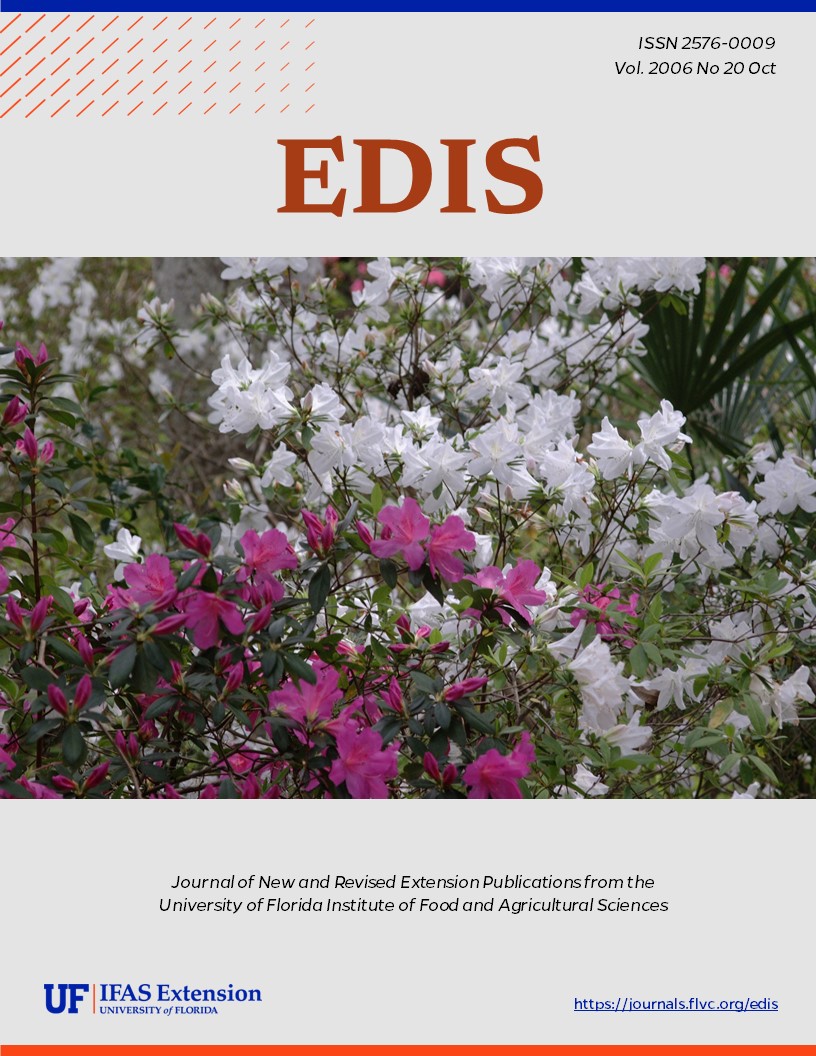Resumen
EENY-370, a 3-page illustrated fact sheet by Frank W. Mead, describes this jumping plant louse which causes severe damage to the leaves of the false-mastic tree. Part of the Featured Creatures series, this publication covers the description, host plants, and selected references. Published by the UF Department of Entomology and Nematology, May 2006.
Citas
Arnett Jr RH. 2000. American Insects: A Handbook of the Insects of America North of Mexico. CRC Press. Boca Raton. 1003 pp. https://doi.org/10.1201/9781482273892
Gann GD, Abdo ME, Gann JW, Gann GD Sr., Woodmansee SW, Bradley KA, Verdon E, Hines KN. 2006. Wild mastic, False mastic. Natives For Your Neighborhood. The Institute for Regional Conservation, Miami. http://www.regionalconservation.org/beta/nfyn/plantdetail.asp?tx=Sidefoet (3 May 2006).
Little EL, Jr. 1953. Check list of native and naturalized trees of the United States. USDA Agr. Handbook 41: 405.
Percy DM. 2005. Psyllids of Economic Importance. Psyllids or 'jumping plant lice' (Psylloidea, Hemiptera). (3 May 2006).
Tuthill LD. 1944. The psyllids of America north of Mexico (Psyllidae: Homoptera). Iowa State Journal of Science 17: 443-660.
USDA. 2006. Sideroxylon foetidissimum Jacq. false mastic. USDA Plant Database. http://plants.usda.gov/java/profile?symbol=SIFO (3 May 2006).

